Hawthorn Meaning, Healing, and Magical Uses
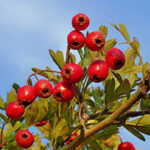
Welcome to the Masters’ Grimoire of Magical Herbs page for Hawthorn. Here you will learn everything you've ever wanted to know about this herb including Hawthorn's magical uses, Hawthorn physical healing, and emotional healing properties, plus its use in meditation, Hawthorn lore and legends, and much more!
Introduction to Hawthorn
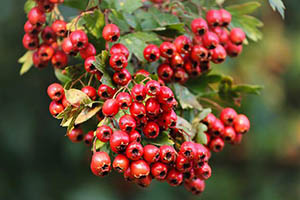
The technical name for Hawthorn is Crataegus. It is called Quickthorn, Thornapple, May-Tree, Whitethorn, Mayflower, Hawberry, and Fairy Bush. It is a genus of several hundred species of shrubs and tress in the Rosacaea family. The name Hawthorn was originally applied to the species native to Northern Europe, especially the common Hawthorn. Hawthorn usually has thorny branches. The most common type of bark is smooth and gray and develops in ridges on older trees. The thorns are small and sharp-tipped on branches that stem from the trunk.
The leaves grow spirally on long shoots and clusters between branches and twigs. The fruit is red and berry-like but structurally a “pome” that contains five pyrenes that resemble stones of plums and peaches. This fruit is edible and is commonly used to make jelly or homemade wine. The young leaves and flower buds are also edible and are known as “bread and cheese” in rural England.
The fruits of Mexican Hawthorn, also known as tejocotes, are rated raw, cooked, or made into jam for the winter. They are often stuffed into piñatas during pre-Christmas celebrations known as Las Posadas. They are also cooked with other fruits to make a punch. The paste of these fruits along with sugar and chili powder produce a popular Mexican candy called rielitos.
The name Crataegus is derived from the Greek word “kratos” which means strength. This is because of the great strength of the wood of the Hawthorn tree. It is also derived from the Greek word “akin” which means sharp. This refers to the sharp thorns on the branches. The name “haw” originally came from Old English for hedge and also applies to the fruit.
It is estimated that are over 1000 recognized species of Hawthorn. This genus most likely appeared in the Eocene period and likely in Eastern North America and Europe. The earliest known leaves of the genus were from the Eocene of North America.
The Sacred Number of Hawthorn is 109.

Hawthorn Magical Uses and Purposes
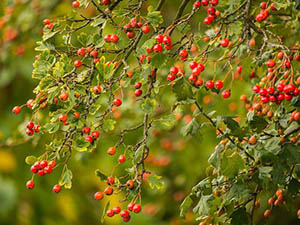
According to the iChing, Hawthorn is useful in magical purposes for tenacity, strength, self-discipline, persistence, determination, courage, perseverance, purpose, and patience.
Hawthorn has very magical origins. During the spring in festivals in England, large boughs of Hawthorn were cut and placed outside on the grounds outside of houses. They were called May Bushes and they were decorated with wildflowers. Back then, it was okay to decorate the boughs outside of the home as bringing them inside was said to bring death and illness. This tree was also considered to be beloved by fairies who lived within the branches. Cutting down a Hawthorn tree is bad luck!
It is a sacred tree to many Pagan religions. The blossoms are called May Flowers and are used in Spring celebrations. Since the trees are sacred to the fairies, you must first ask permission before taking the blooms or sprigs and you must leave an offering if you plan on cutting the entire tree down.
To prevent people from entering your home in an astral state, place hawthorn around the doors and windows. Planting hawthorn around other trees of your home will keep out unfriendly spirits. Adding hawthorn to an amulet will protect you from spirits and harmful magic.
Use the thorns of hawthorn to mark wax, write with magical ink, or fix something for magical purposes. Use the phrase “by Oak, Ask, and Thorn” which refers to Hawthorn, to use in blessing and rituals. These three trees were considered portals to the realm of the fairy.


Healing with Hawthorn
Hawthorn Physical Health Benefits
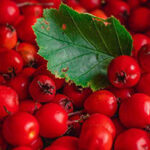
There is evidence that Hawthorn can be beneficial in for symptom control and physiological outcomes when used for treating chronic heart failure. There is also evidence that it can be beneficial for cardiovascular disease.
Many different species of hawthorn have been used in traditional medicine. The dried fruits are used in traditional Chinese medicine as a digestive aid. The plant has been used in herbal medicine to strengthen cardiovascular functions.
The bark of the Hawthorn tree can be used as a sedative, antispasmodic, diuretic, and to help regulate blood pressure. It has also been used as a heart tonic and for kidney issues. The flowers and berries are astringent and can be used for sore throats.
Spiritual Healing with Hawthorn

The essence of Hawthorn can help to open the heart to receive spiritual blessings and advice. It is beneficial in meditation practices to help restore spiritual and emotional balance.
Emotional Healing with Hawthorn

Hawthorn flower essence helps open the heart to giving and receiving love. It can help heal heartache. It encourages self-love and self-acceptance. It can also help develop courage. It can help bring inner strengthened allow a person to find their courage.
 |
Notes from the Masters
Hawthorn’s berries look similar to cranberries and can be used in similar ways. Try making a hawthorn jelly or, even better, utilize hawthorn instead of tomatoes, for a tastier, healthier homemade ketchup!
|
 |
Hawthorn for Chakra Healing

Hawthorn is associated with the Root Chakra. The Root Chakra is the first chakra is also known as the Base Chakra, the Red Chakra, or Muladhara. It is located at the base of the spine and controls the kinesthetic energy for feeling and movement. It is the foundation of physical energy and spiritual energy of the body.

Color Energy of Hawthorn
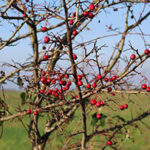
Hawthorn brings us the energy of the Red ray. Red is the color of energy and passion. It can also represent anger, warmth, and excitement. It is a color that can bring drive, determination and inner strength. It can inspire courageousness and fearlessness. It motivates to be strong and so emotionally intense that it can raise blood pressure and speed up metabolism. It is also also associated with love and life.

Angels Associated with Hawthorn

Hawthorn is associated with three different angels, Asaliah, Atalie, and Mihael
Asaliah - Protector and Ruler of the dates Nov 13-17 / Scorpio
Ataliel - Guardian of the 15th Mansion of the Moon , the Mansion of Wings. You might use your Hawthorn to honor Ataliel and seek his assistance to excel and fly to new heights in your endeavors. o.
Mihael - Protector and Ruler of the dates Nov 18-22 / Scorpio

Hawthorn and the Goddess

Hawthorn is associated with Sedna. Sedna is the most powerful of the Inuit goddesses. She is a sea goddess known for transformation. She symbolizes the ongoing cycle of life and death. She allows us to find the positive in transformation and change. Use Hawthorn in your efforts to for transformation.


Hawthorn Birth Herb

Hawthorn is the birth herb for those born on Jan 12, March 16, April 18, April 20, May 18, May 30, June 15, July 14, Aug 25, Sept 21, Sept 29, Dec 1, Dec 10, Dec 21, and Dec 30.
If you were born on one of these dates, you might find that you have a particular attraction to Hawthorn. You may feel drawn to it. Those with the birth herb of Hawthorn will likely find it more powerful and intuitive to work with.

Hawthorn I Ching Hexagram

Hawthorn is associated with the 26th hexagram of the iChing. This hexagram is about “Controlling Yourself.” To build character, the empowered person makes discipline a habit. When circumstances disrupt his or her habits, the empowered person’s strength of character remains.
The hexagram tells us that Hawthorn can be helpful in finding strength and becoming more tenacious. The hexagram also indicates Hawthorn can be helpful in developing self-discipline, and persistence. It is a perfect herb to help with keeping to a diet or exercise program.

Hawthorn Astrological Sign
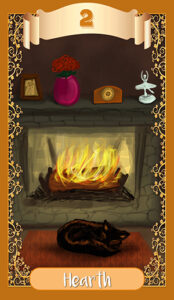
In western astrology, Hawthorn is associated with the sign Cancer. In Celtic zodiac, the dates May 13th-June 9th is represented by Hawthorn or Huath as the old Irish called it. This time of year is also called the Hawthorn moon and is associated with fertility.
in Moon Astrology Hawthorn is associated with the 2nd Mansion of the Moon, the Mansion of the Hearth. This Mansion is one of family togetherness, nurture, and home. Hawthorn can bring these energies to your life.

Uses of Hawthorn in Feng Shui

Hawthorn is associated with water energy in Feng Shui.
The fruit of the Hawthorn brings us Water energy. Water energy is Yin, flowing, life giving, adaptable, nurturing and sacred. Use the fruit of the Hawthorn for feminine power, adaptability, overcoming obstacles, tolerance, keep the flow of life and money growing, and all efforts to nurture others and yours

Uses of Hawthorn in Talismans and Amulets

Hawthorn is associated with the Mansion of the Hearth. Use Hawthorn in amulets and talismans to deal with abandoment, belonging, comfort, communication, companionship, compatibility, detachment, emotional calm, emotional strength, emotional support, engagement, enhanced listening skills, family, fire energy, group working well, health, home, deal with homesickness, hospitality, listening material comfort, mothering, praise, reconciliation, recreation, redemption, relation, renewal, rest, establish roots, safe place, security, sense of belonging, deal with separation, sharing, spouse, thinking critically, clear thinking, togetherness, understanding, unity, warmth, community, dedication, nurturing, diversity, domestic bliss, empathy, family life, forgiveness, friendship, manners, marriage, abundance, enjoyment, merriment, better life, and harmony.

Using Hawthorn in Divination
Hawthorn shows you the truth of your heart. The truth while not always wonderful to perceive is worthy to understand. It suggests challenge within divination, being both positive and difficult in certain ways. It questions worthiness and encourages us even through failure. It will leave you transformed into someone more capable. Using hawthorn for divination is always a test of energy and courage and can only happen when you are truly ready.

Meditation with Hawthorn

The image of a Hawthorn tree dripping with white beautiful blossoms can be useful in meditation. Picturing this tree, or many, will help transport you to a safe and calm place, fragrant and open in nature. Try picturing a Hawthorn tree next time you are meditating and see what observations you can make about how it makes you feel as well as the peace it provides.

Lore and Legends of Hawthorn
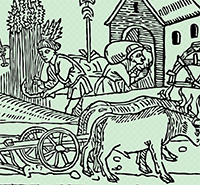
There is an old Scottish saying that goes “Ne’er cast a cloot til Mey’s not” which means, don’t take off your clothes before the summer has fully arrived meaning when the Hawthorn or Mayflowers are fully in bloom.
In Ancient Greece, hawthorn was regarded as an emblem of hope and its branches have been said to have decorated many wedding processions and used to deck the altar of Hymenaios. It is also said that the tree was the source of the Crown of Thorns that was placed on Jesus’ head at his crucifixion. It is also said that the wood of Hawthorn was the source for the staff of Joseph of Arimathea.
In Celic lore, the plant was used commonly for inscriptions along with yew and apple. Serbian folklore as well as Balkan, states that the wood of the hawthorn is essential to kill vampires and many stakes where created for this purpose.
In Gaelic traditions, Hawthorn marks the entrance to the otherworld and is strongly associated with fairies. It is considered very unlucky to cut down a hawthorn tree. The superstition and dread or harming Hawthorn trees may also stem from British Isle traditions that the trees originate from lightning or thunderbolts and being such they provide protection from lighting strikes. Hawthorns are often found beside “clootie wells” which are types of holy wells. The trees are also sometimes known as rag trees and strips fo cloth were tied to them as part of healing rituals.
According the medieval legend, the Glastonbury thorn was to supposed to have magically grown from the walking stick of Joseph of Arimathea at Glastonbury in Somerset, England. The original tree was destroyed in the sixteenth century during the English Reformation but many cultivars have survived. Since the reign of King James I, a Christmas custom was to send a sprig of Glastonbury thorn flowers to the Sovereign, which was used to decorate the royal family dinner able.
In Victorian times, Hawthorn represented hope in the language of flowers. The Hawthorn flowers is also the state flower of Missouri.

by Theresa Peters
Theresa Peters is an (almost) life-long Alaskan. She is a writer and artist for the Crystal Inner Circle and has been studying crystals and their metaphysical and magical properties since she was a teen. Living in Alaska she has grown to appreciate the magical qualities of nature and the way the effect it has on all living things.
Share this page:
Always stay up to date on crystals, sales, get the latest guides, and more by joining our email list!
We're proudly spam-free and will only send you the best crystal info and sales.
References
IChing for Beginners - by Mark McElroy
https://en.wikipedia.org/wiki/Crataegus
https://www.celticjewelry.com/celtic-culture/june-hawthorn-tree
https://witchipedia.com/book-of-shadows/herblore/hawthorn/
https://www.talesunfold.com/learn-the-ogham/aicme-of-huath/
(Please note: Information on this website is no substitute for consulting a health care professional. All information contained on this website, including information relating to medical and health conditions, products, and treatments, is for informational purposes only. Please see your doctor or health care professional before starting any alternative treatments, diets, supplements, or exercise programs.)




